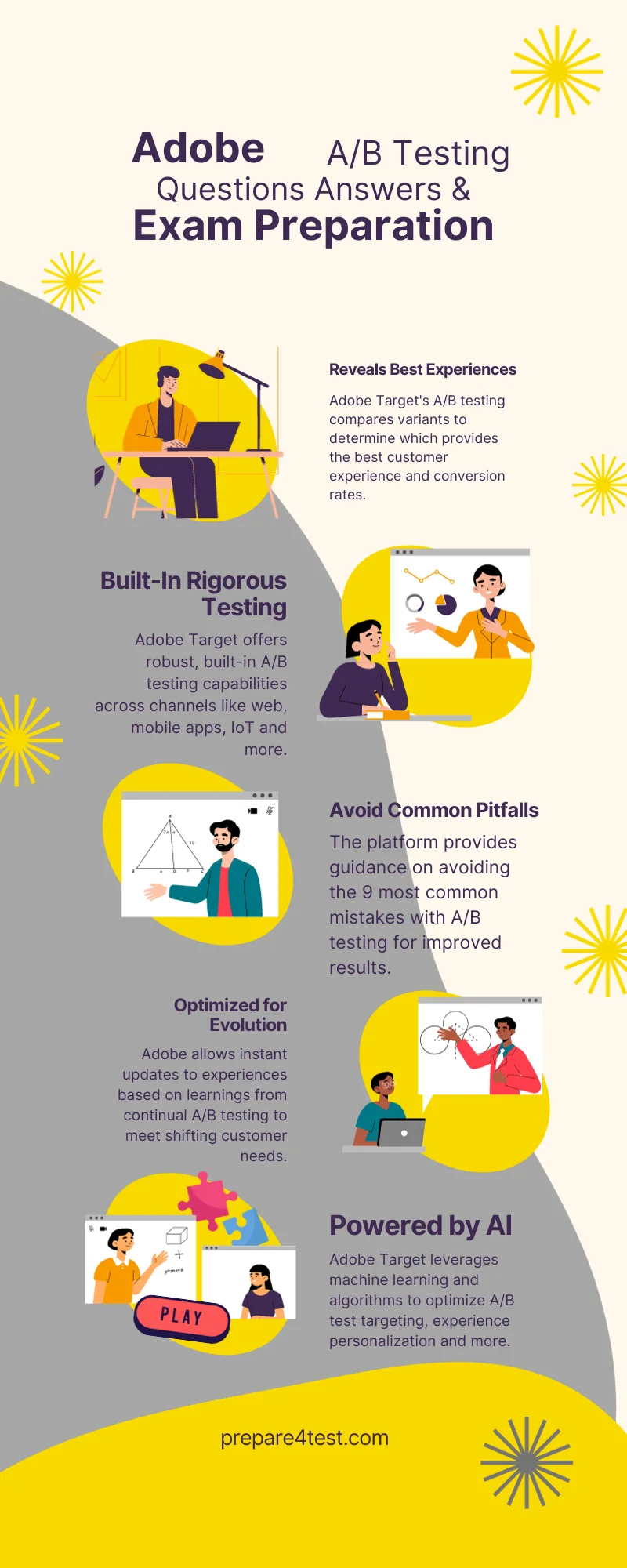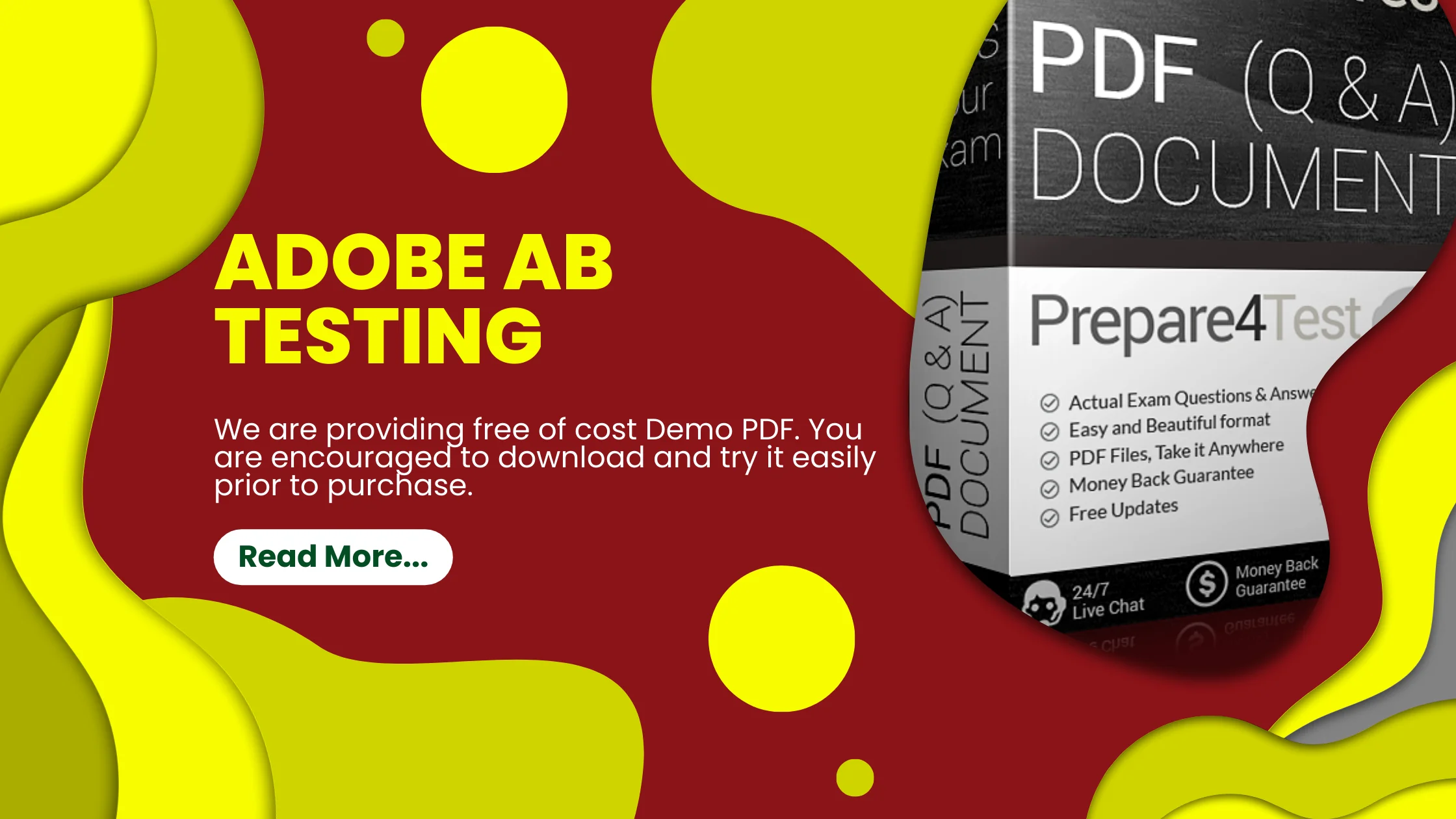
Testing and optimizing your website is crucial to ensure you provide the best possible user experience. A/B testing allows you to test changes to your site by showing different versions of a page to users and measuring how they interact. One powerful tool for running Adobe AB Testing is Adobe Target.
Adobe Target integrates directly with Adobe Experience Cloud, making it easy to test changes to your site without needing developers or additional tools. It provides an intuitive visual editor to create variations of your site, define user segments, set up tests, and analyze results. Whether you want to test changes to messaging, layout, images, or calls-to-action, Adobe Target enables you to create and launch tests in just minutes.
Key benefits of using Adobe Target for A/B testing include quick implementation without code, easy creation of tests with their visual editor, automatic allocation of traffic to test variations, and in-depth reporting on test results. It also optimizes tests automatically, ensuring you show the best-performing variation to more users. This means you can increase conversion rates faster.
As you design tests, Adobe Target lets you create personalized experiences adapted to user behavior and attributes. This advanced segmentation gets you results tailored to different audiences. With the platform’s AI capabilities, it automatically identifies the best-performing variation for each segment for you.
In summary, Adobe Target is a powerful A/B and multivariate testing solution enabling you to optimize your site effectively. Its tight integration with Adobe Experience Cloud, intuitive editor, advanced analytics, and automation capabilities make it easy to drive more conversions through testing.
What is AB testing in Adobe?
A/B testing, also known as split testing, is a method of comparing two or more versions of a web page, email, or other marketing asset to determine which one performs better. Adobe Target provides robust ab testing capabilities to help marketers optimize experiences.
With Adobe Target, you can test variations of a page by creating an A/B activity. Using the visual editor, you design different experiences that change elements like images, headlines, calls to action, layouts, and more. Adobe Target will then show these variations to different segments of visitors to your site and measure how they perform.
Key metrics analyzed in A/B tests include click-through rate, time on site, conversions, revenue, and more. By evaluating the results, you determine which variation resonates best with users. Adobe Target also uses advanced algorithms to automatically allocate more traffic to the better-performing variation during a test.
After the test reaches statistical significance, Adobe Target identifies the winning variation. You can then deploy this as the new default experience to all users for maximum impact. More advanced tests in Adobe Target include multivariate testing with many variations and personalized testing to adapt experiences based on user attributes.
In summary, Adobe Target makes A/B testing easy through its visual editor, advanced analytics, and automation. Testing experiences systematically is vital for improving customer experience and ROI.
What is the Adobe testing?

Ab testing adobe target allows marketers to systematically test and optimize web experiences. It is a robust experimentation and personalization solution from Adobe that integrates tightly with other Adobe Experience Cloud applications.
At its core, Adobe Target enables A/B testing, which is a method of comparing two or more variants of a web page to see which one performs better. Using the visual editor, you can create different experiences that vary elements like images, headlines, layouts, calls-to-action, and more. Adobe Target then shows these experiences to different segments of visitors and compares metrics like click-through rate, time on site, conversions, and revenue to determine the best variation.
More advanced tests available in Adobe Target include multivariate testing, experience targeting, automated personalization, and recommendations. The platform makes it easy to test quickly at scale without needing developers. Users can analyze performance and automatically serve the optimal experience to each audience to maximize outcomes.
With its AI-powered capabilities, Adobe Target continually learns and tailors experiences to individual customer needs and preferences. Tight integration with Adobe Analytics lets you import key metrics and segments to target the right audiences. As part of Adobe Experience Cloud, it also works seamlessly with Adobe Campaign, Adobe Audience Manager and more to provide a complete view of each customer.
In summary, Adobe Target offers a sophisticated testing and personalization framework to systematically optimize experiences across channels. Its user-friendly workflow, automation, and integration capabilities make it easy to drive more conversions.
What is Adobe Target testing?
Adobe ab testing tool enables systematic experimentation and optimization of digital experiences. Adobe Target, part of Adobe Experience Cloud, makes it easy to continuously test and personalize across channels.
At its foundation, Adobe Target offers visual A/B testing to compare variations of a web page and determine which performs better. Using the intuitive editor, you can alter elements like images, headlines, calls-to-action, and layouts between versions. Adobe Target then shows these variants to different visitor segments and analyzes engagement metrics to identify the optimal one.
More advanced tests available include multivariate testing, automated personalization, AI-powered recommendations, and experience targeting. Adobe Target lets you test quickly without needing developers and makes it easy to scale experiments across the entire customer journey.
Tight integration with Adobe Analytics allows the import of key data and segments to target the right audiences. Automated AI features mean Adobe Target continually tailors experiences to individual user needs for maximum impact.
In summary, Adobe Target provides a sophisticated framework to systematically test and optimize digital touchpoints. Its user-friendly workflow, automation capabilities, and integration with other Adobe solutions help drive more conversions through optimized customer experiences.
What is AB testing used for?

A/B testing, also known as split testing, is commonly used to optimize digital experiences like websites, mobile apps, emails, and ads. Adobe ab testing tools like Adobe Target make it easy to run A/B tests to determine which version of an experience drives more conversions.
The goal of A/B testing is to identify which variation of a page or asset resonates best with your audiences. You can test different elements like headlines, images, calls-to-action, page layouts, content, etc. By showing visitors different versions and analyzing how they interact, you gain data-backed insights on what works.
Key metrics analyzed in A/B tests include click-through rate, time on page, conversions, average order value, and more. By determining which version performs best, you can better engage each audience and increase outcomes. A/B testing is used across industries from ecommerce stores to lead generation sites and everything in between.
Ongoing testing is crucial as new trends, technologies, and competitors continually change the digital landscape. The experiences that convert today may not be as effective in the future. A/B testing provides the agility to optimize quickly based on real user data and drive growth.
In summary, A/B testing helps determine the best possible digital experiences to offer based on empirical data. It is an invaluable process for reducing guesswork and boosting key metrics.
Conclusion
In closing, adobe ab testing is a powerful methodology that enables systematic optimization of digital experiences. Leveraging solutions like Adobe Target, testing different variants of web pages, emails, ads, and more is straightforward.
The key benefit of A/B testing is identifying the best possible experiences to engage each audience and drive conversions. By comparing real user interactions with different versions, you gain empirical data on what resonates. This takes the guesswork out of making decisions and ensures you offer the right content and features.
Ongoing testing is crucial as new technologies, competitors, trends, and algorithms continually shift the landscape. What worked yesterday may falter tomorrow. A/B testing provides the framework to adapt quickly based on field data. Rather than rely on hunches, you can optimize experiences based on proof.
While running valid tests involves strategic design and statistical knowledge, tools like Adobe Target make execution user-friendly. Tap into capabilities like AI-powered personalization, automation, and seamless integration with marketing and analytics systems. This makes it easier than ever to experiment at scale and grow.
In closing, A/B testing powers the world’s most successful digital experiences by enabling data-backed iteration. It provides a proven path to engage audiences and unlock growth through systematic optimization.

